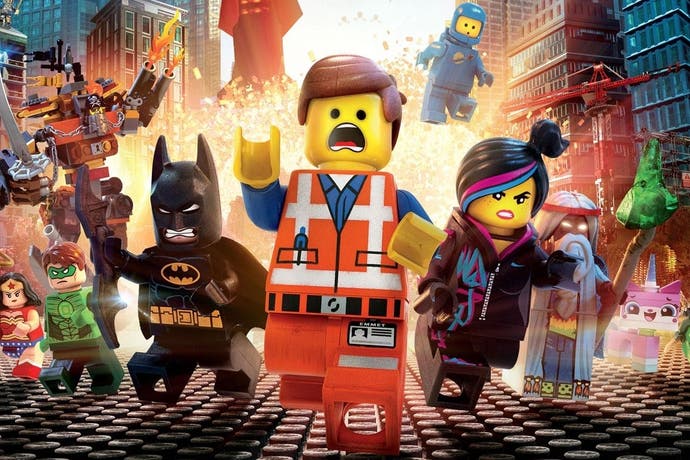Next-Gen Face-Off: The Lego Movie Videogame
Chip off the old blockbuster.
With the arrival of Lego Marvel Super Heroes on PS4 and Xbox One, Traveller's Tales decided to forgo the slick, low-latency 60fps set-up of the early PS2 games in favour of a less demanding 30fps update, using the saved GPU cycles to dramatically ramp up the level of effects work. Released just a few months later, it's not particularly surprisingly to see that The Lego Movie doesn't deviate from the course set out by the previous game, and is built upon the same core rendering foundations - lighting, shaders and post-process effects all take precedence over running at high frame-rates. As we've seen before, the results are spectacular, delivering a cinematic feel to the proceedings that enhance the more exciting moments throughout the game.
A native 1080p presentation is handed in on both PS4 and Xbox One, with the consoles delivering a near-identical experience on a graphical level - all the art and effects work seamlessly match up, right down to the use of low-resolution shadows and the way that depth-of-field effect helps to smooth over edges across more distant parts of the environment. Image quality gains a minor bump in The Lego Movie, if only making for a minor improvement: post-process anti-aliasing is used across both consoles, with the PS4 getting an ever-so-slightly stronger version of the effect. In motion this doesn't really lead to a visibly smoother image, with noticeable pixel crawl and shimmering on finely detailed structures and shiny surfaces on both formats.
[Update 16/3/14 19:07: an interesting theory here on a vertically super-sampled PS4 image, derived from a 1920x1200 native resolution squeezed down to 1080p. After reviewing the assets, we're more inclined to believe it's in the neighbourhood of 1920x1280 based on 64/54 pixel ratio. The boost to image quality is minimal - additional resolution benefits thin geometry and texture detail, neither of which are major elements in the visual make-up of this game. Additionally, much of the image is submerged under depth of field - the main reason this escaped our notice in the first place. For the record, Lego Marvel Super Heroes on PS4 is definitely native 1080p, so this is a new development for the series - and could well be the first PS4 game to render at a resolution exceeding full HD.]
Other upgrades are thin on the ground. The low-resolution environment maps used on both platforms - which reflect surrounding objects and lighting across shiny surfaces - now feature a soft diffused look in The Lego Movie, completely eliminating the pixelated appearance in the previous game. Beyond that, though, other differences are more artistic in nature, such as the increased use of scenery modelled to look like a collection of Lego bricks carefully stuck together. Entire towns, canyons, caves and even various effects (smoke, fire, and water) all appear to be constructed from thousands of bricks and pieces, and this does fantastic job of selling the imaginative and colourful world of the toys on the TV screen.
"While the Xbox One and PS4 games are essentially interchangeable, it's actually the PC version that suffers most in terms of image quality."
Alternative comparisons:
The same attention to detail in the core artwork carries over to the game on PC, where we find that texture detail, filtering and shadow quality all closely match up with the console versions. Post-process anti-aliasing is also used on PC, although coverage is spotty to say the least, to the point where many edges are completely untouched by the effect, resulting in more jaggies and shimmering than on console. On the plus side, post-process effects - such as depth-of-field - appear to have less of an impact on the PC's AA implementation on objects close to the camera, so we get a slightly sharper image as a result.
As with previous Lego titles, the video settings menu is extremely limited, so image quality upgrades and various other parameters have to be made using your graphics card's control panel or by editing the game's .ini file. The Lego Movie gives us the ability to toggle resolution, refresh rate, aspect ratio, texture quality and brightness. Curiously, refresh rate is listed twice, and as far as we can tell both options are identical. This setting acts as a frame-rate limiter, but there's no v-sync option to speak of, so there's the potential for tearing to crop up. Another oversight is that the option to adjust video settings only appears during the pause menu after you've started playing the game. Overall it seems the PC version didn't receive as much care and attention as it should have, with basic features either poorly implemented or missing entirely.
This lack of refinement also extends to how certain visuals effects are rendered in comparison to the console releases, with some unusual bugs leading to specific graphical features displaying incorrectly (or not at all) in many scenes. The lighting model in particular throws up some interesting anomalies. A lot of the time it looks like the lighting just bleeds through objects without proper occlusion, leading to a lack of shade in areas situated outside of direct sunlight. Reflections are also rather hit and miss, with missing or simplified environment map details, perhaps due to the erroneous lighting implementation.
In other areas we find camera and object blur operating with significantly reduced intensity on the PC, while the low-resolution environment maps lack the soft, diffused look seen on the PS4 and Xbox One, with these elements appearing blocky in comparison. Screen-space ambient occlusion (SSAO) appears to be present in all three versions of The Lego Movie, but the implementation is completely broken on the PC, with the vast majority of surfaces lacking coverage entirely.
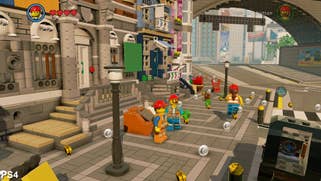
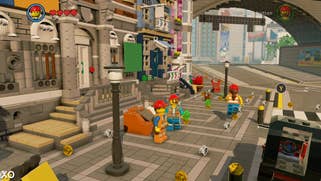


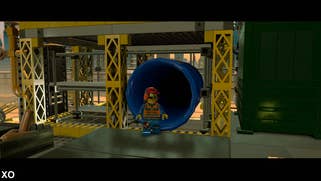
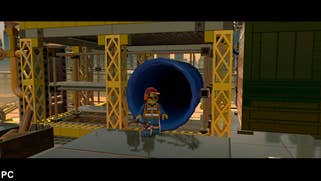





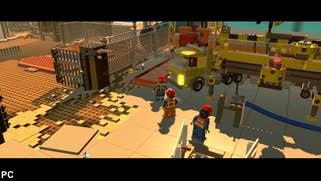
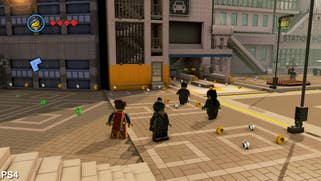

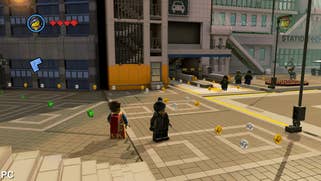

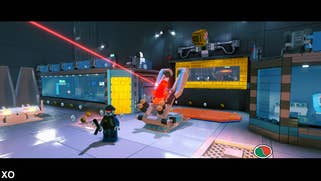
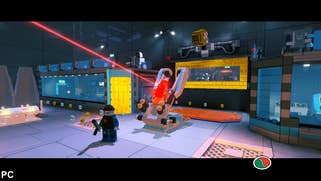


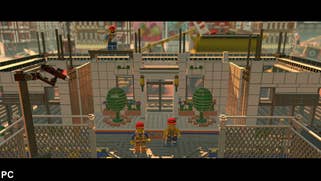
So, from a visual perspective it's a bit of a mixed bag for the PC version, with a few rendering issues resulting in a game that doesn't look quite as polished as on console. However, it's clear that the PC version has one significant advantage over the console editions. It's possible to run The Lego Movie at much higher frame-rates than on consoles, and achieving a near consistent 60fps only requires a modest hardware set-up. Our Core i5 and GTX 680 rig delivered a solid 60fps 90 per cent of the time, and based on our tests with the new DFPC and Lego Marvel, a similar level of performance should be possible using a cheaper configuration.
The impact of running at twice the console frame-rate is clear from the outset: controls feel considerably more responsive, while sweeping camera pans and fasted-paced moments appear noticeably smoother. Things aren't quite perfect though, and we often see judder creep in during the cut-scenes and more action packed parts of the game, caused by short bouts of unsightly screen tear. Right now, the video settings menu is somewhat botched, with the v-sync option being absent - requiring the user to dip into the GPU control panel to force it on. On top of that the frame-rate limiter doesn't seem to work entirely to spec: when tearing manifests on-screen we often find that there is no common information between frames, which suggests that the game is at times running faster than 60fps, despite the cap in place.
While running at 60fps has obvious benefits in reducing latency and delivering the smoothest-possible presentation on a standard 60Hz display, historically the Lego games have always been very latency-tolerant when it comes down to gameplay, and this is something that hasn't changed with The Lego Movie. The action is very forgiving, with next to no penalty for dying, and this reduces the need for precise timing and quick reactions. Having fun solving puzzles, collecting items and new characters and experiencing the various scenarios on offer is the key design goal here, rather than hitting players with taxing life-sapping moments.
"There are few surprises in terms of console performance - just like Lego Marvel Super Heroes we're looking at a capped 30fps on both PS4 and Xbox One."
The situation benefits the console versions of The Lego Movie, which run at 30fps instead of the super-smooth 60fps set-up so easily attainable on PC. While the controls feel noticeably heavier, this has little impact on the difficulty level of the game. We found ourselves button-bashing a bit more than usual during combat, but otherwise we had no trouble making jumps and performing all the actions asked of us by the game during our gameplay sessions. Both consoles also deliver a solid 30fps presentation that rarely deviates from the target frame-rate, bar some occasional torn frames on the PS4 that have no impact whatsoever during gameplay - the tears simply lead to a small amount of judder during the opening sequences in some levels.
The Lego Movie: the Digital Foundry verdict
Overall, the situation we have here makes for an interesting choice: do you opt for the more polished console release (either will do) or elect to take a graphical downgrade to enjoy gameplay at double the frame-rate on the PC? In our experience, the smoother action and the lower-latency controls provided by a 60fps refresh genuinely added an extra level of refinement to the gameplay, making the already highly entertaining experience even more enjoyable. The downside is that on a graphical level the environments lack the same level of depth compared to the console releases, while the lighting in the outdoor locations sometimes looks wrong, impacting the precision aesthetic of the Lego brick environments.
That said, extremely high frame-rates are not an essential requirement in the Lego experience as long as the refresh remains stable, and in this respect the console versions remain perfectly playable without ever feeling that anything is amiss. Either way, gameplay is well-handled across all formats and Traveller's Tales does not disappoint in delivering a beautiful release that perfectly captures the distinct look and feel of the imaginative Lego universe, regardless of platform-specific quirks. If performance is a priority, the PC game is well worth picking up, despite some noticeable graphical bugs. Meanwhile, both the PlayStation 4 and Xbox One versions are highly recommended.
